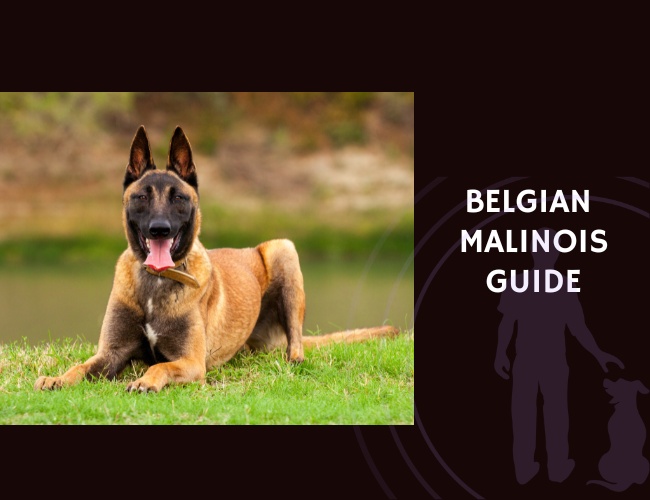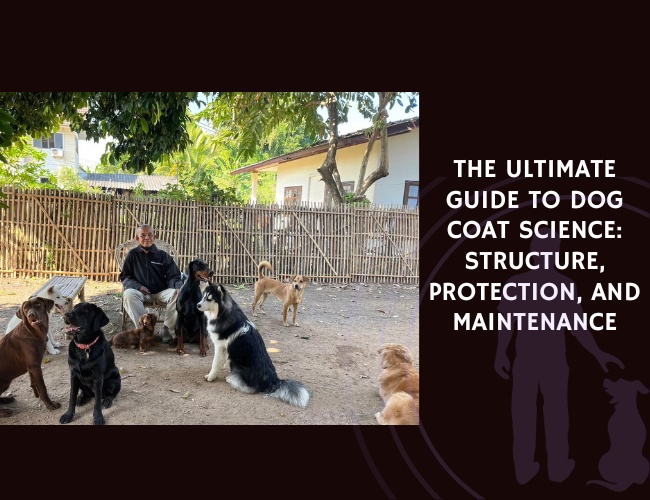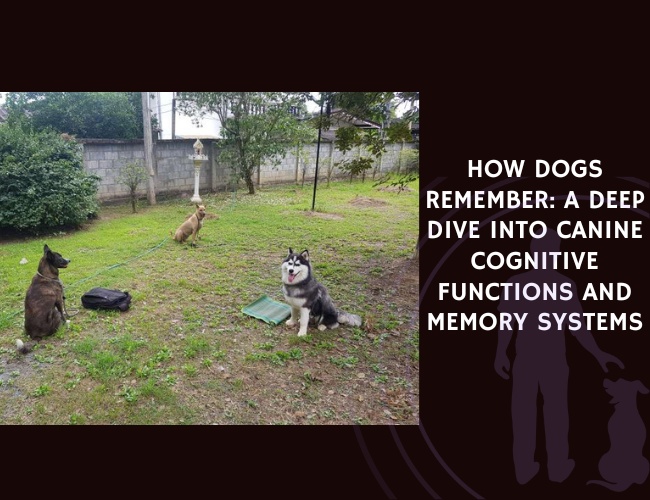Introduction to the Belgian Malinois
A glance at history and origins
The Belgian Malinois has a rich heritage, tracing its roots back to Belgium. This breed was originally developed in the late 1800s. The goal was to create a dog that excelled at herding sheep and protecting farms. Through generations of careful selection, Belgian farmers shaped these dogs into workers with incredible stamina, focus, and intelligence. Their natural abilities quickly gained notice far beyond agricultural circles.
Herding and protection roles
Traditionally, malinois dogs served as versatile partners on farms. They moved livestock with agility and precision while staying alert for threats. Herding was not just about guiding sheep or cattle; it was also about protecting them from danger. The dogs worked side by side with people, displaying loyalty and keen instincts. Their jobs demanded decision-making skills and the ability to respond rapidly to changing situations. These characteristics created a foundation for many roles in the modern world.
Rise in popularity for demanding jobs
Over time, the impressive talents of the Belgian malinois have made it a favorite for challenging jobs. You’ll find that their high drive, sharp senses, and eagerness to please make them ideal for police, military, and service work. Their quick learning and reliability boost their appeal for search and rescue, detection, and protection duties. As more people discover what these dogs can do, their reputation for professional excellence continues to grow.
With this background in mind, gaining a deeper understanding of what sets the Belgian malinois apart in character and temperament helps explain why they excel in such vital roles.
Character and Temperament
Energy, Drive, and Focus
Belgian Malinois are famous for their high energy and work drive. These dogs were bred for herding and protection. As a result, they have intense focus and a natural instinct to respond quickly to changes around them. Their level of vigilance means they notice even small details and are always ready to act. For families or handlers, this high drive can be exciting but also challenging, especially without enough structure or activity in daily routines. You’ll find that with consistent engagement, their motivation makes them easy to train and eager to please.
Natural Instincts and Behavior Patterns
One thing to know about the Malinois is their strong predatory motor patterns. This means they are instinctively drawn to chasing, biting, and carrying objects. In working environments, such as police or detection roles, this trait is invaluable. At home, it requires clear structure to ensure these instincts do not become problematic, like chasing small animals or nipping at children. Managing this energy with games and jobs, like fetch or agility, is supportive for their wellbeing and keeps everyone safe.
Loyalty and Social Traits
Malinois are intensely loyal to their primary handlers. This loyalty is balanced with a healthy wariness of strangers and a natural tendency to protect their home. While they form deep connections with their families, they can be territorial, sometimes barking or acting guard-like when new people arrive. Early and positive socialization gives them the confidence to relax around unfamiliar people, while keeping their protective instincts in check.
With the right guidance, their energetic and loyal temperament becomes the foundation for a rewarding partnership. Their drive and focus carry over into every aspect of life, including their physical and cognitive needs.
Physical Characteristics and Appearance
Standard traits, size, and coat
Belgian Malinois are easy to recognize thanks to their athletic and alert look. They typically stand 22-26in tall at the shoulder and weigh between 40-80lb. Their bodies are lean, yet well-muscled, built for speed and stamina. The breed has a short, straight coat that lies close to the body. Most common colors include rich fawn, mahogany, and shades of black. The agile frame, deep chest, and square build help them move with confidence and power. Their dark, almond-shaped eyes and upright, triangular ears give them a smart and watchful expression.
Differences from similar shepherd breeds
While Belgian Malinois might look similar to German Shepherds, there are clear differences. Malinois are lighter, more nimble, and tend to have a straighter topline. Their coats are shorter and less dense compared to some shepherds, making grooming easier. Unlike the heavier structure of German Shepherds, Malinois have a more refined, wedge-shaped head and tighter skin.
Physical attributes that enable working roles
Everything about the Malinois is built for action. Their strong hindquarters allow for quick bursts of speed and jumping, while a balanced, athletic frame gives them impressive endurance. The breed’s compact muscles and slim profile are perfect for tasks that require agility, such as herding or pursuit. Because they are light on their feet, they are excellent at maneuvering in tight spaces or working over challenging terrain. This combination of strength, speed, and alert posture makes them outstanding partners for jobs requiring focus and physical ability.
With an understanding of their physical makeup, you can see how the Malinois is naturally prepared for a variety of demanding roles.
Training and Education Requirements
Motivation and Reinforcement
Belgian Malinois excel with drive-based motivation. This means using their interest in toys, treats, or play as rewards during training. Variable reinforcement schedules—where rewards are given at random intervals—keep the dog interested and prevent boredom. You’ll find that mixing up when they receive praise or treats helps them stay focused and eager to work. This approach fits their natural need for stimulation and challenge.
A Balanced Approach to Learning
A balanced training plan includes:
- Obedience training—teaching commands like sit, stay, and come
- Impulse control exercises—to manage their high energy and excitement levels
- Functional tasks—skills related to their future jobs or household roles
Training sessions should be short and engaging, with plenty of breaks. It is Informative to note that Malinois pick up new tasks quickly but need ongoing practice to maintain those skills. Showing consistency and being supportive in your methods leads to lasting results.
The Critical Stage: Early Socialization
Socialization and imprinting between three and fourteen weeks of age are crucial. During this time, puppies should meet a variety of people, encounter new environments, and interact with other animals. Positive exposures now prevent fear or aggression later in life and help the dog become a confident adult. Early work with people and experiences lays the foundation for healthy relationships and solid training outcomes.
By laying this groundwork early, your Belgian Malinois will thrive, remaining eager and motivated to learn throughout their lives.
Mental Stimulation and Cognitive Health
Preventing burnout through rest and task switching
Belgian Malinois are intensely intelligent and focused. While this makes them top partners in demanding work, it also means their brains need break time. Without rest, too much stimulation or repeated routines can lead to cognitive burnout and even behavioral issues. This is why it’s important to give these dogs regular rest periods, both between training sessions and after high-energy play. Switching tasks—from games to obedience to scent work—also helps. Task switching keeps them engaged without overwhelming their brains, protecting their cognitive health and overall happiness.
Managing hyperarousal and anxiety
With their high motivation comes high arousal. If left unchecked with little mental engagement, Malinois may show anxiety, frustration, or even obsessive-compulsive behaviors like pacing or tail chasing. We understand this can be worrying, but structured, informative enrichment helps keep these reactions in check. Mental tasks like interactive toys, puzzles, or short training games satisfy their brain and reduce stress, fostering a calmer, more professional companion.
Enrichment activities for natural instincts
Malinois thrive when activities match their natural instincts. Examples include nosework, tracking games, and log-based treat searches. Rotating these activities prevents boredom and ensures their strong drive is constructively channeled. Supportive handlers see that dedicated time for productive enrichment leads to fewer problem behaviors and a well-adjusted, contented dog.
Meeting their mental needs every day sets the stage for a balanced and healthy life, supporting their well-being as much as their physical requirements.

Physical Exercise Needs
Meeting Daily Activity Demands
The Belgian Malinois is a powerhouse of energy and drive. Informative studies show that they need at least 2 hours of physical exercise every day to thrive. This high requirement is not just about burning off energy—it’s about supporting their mental and physical wellbeing. Without enough activity, Malinois can develop behavioral issues and even anxiety. You’ll find that daily engagement is a must for their happiness.
Some fun activity options include:
- Long-distance walks or hikes
- Running or biking alongside their handler
- Agility training or fetch in a secure area
- Scent tracking games or advanced obedience drills
Active working households are ideal, as these settings give Malinois the chance to use their intelligence and stamina. Regularly switching up activities prevents boredom and keeps your dog mentally stimulated.
Structured Decompression Periods
Just as important as exercise is structured rest. Malinois are prone to hyperarousal, so planned down-time supports recovery and behavioral health. Short breaks between activities, calm crate time, or gentle leash walks can help lower arousal levels. This balance prevents burnout and obsessive behaviors, making your dog more manageable and content.
Adjusting for Life Stages and Roles
Exercise needs change with age and work. Puppies benefit from short play sessions and gentle outings. As your dog grows, gradually increase activity to match their energy. Senior dogs may need lower-impact activities, but still enjoy mental games. For working Malinois—such as those in police or service roles—tailoring exercise to job demands ensures peak readiness and wellbeing.
This approach fosters a balanced, healthy life for your Malinois and builds a stronger bond between you and your dog.
Nutritional Requirements
Understanding energy and macronutrient needs
Belgian Malinois are known for their impressive energy and stamina. Their nutritional needs change with their activity level and working status. A highly active working Malinois will need more calories and protein compared to a companion dog that enjoys regular walks and playtime. For optimal muscle recovery and lean mass retention, aim for a diet rich in high-quality animal protein. Healthy fats also play an important role, providing energy and supporting brain function. For most adult Malinois, a balanced diet with the right amounts of protein, fat, and carbohydrates is key to maintaining their best health. 🥩
Pre- and post-workout meal strategies
Meal timing helps these dogs perform at their peak and recover quickly. It’s best to give a pre-workout meal one to two hours before intense training. This meal should be easily digestible and balanced—not too heavy but providing enough energy. After a session, a post-workout meal can help with muscle repair and recovery. Protein and healthy fats are ideal at this stage. For working or highly active dogs, monitor hydration closely, especially on hot days or after exercise.
Supplements and overall wellbeing
Joint health is a special concern, especially for working or aging Malinois. Supplements like glucosamine, chondroitin, and omega-3 fatty acids can support long-term joint function and reduce inflammation. Always consult your veterinarian before starting any supplement. And remember, water should be available at all times to help with digestion and temperature regulation. A well-fed, well-hydrated Malinois will stay ready for action and enjoy a healthier life.
With thoughtful nutrition planning, you support not just peak physical performance but also daily wellbeing. This foundation is vital as we look to other important aspects of Malinois care and health.
Power. Precision. Purpose.
The Belgian Malinois is no ordinary dog.
Bred for work, this breed thrives on precision, discipline, and focus. Its history is deeply rooted in the farmlands of Belgium, where it once guided and protected flocks. Today, its talents are recognised worldwide—from military K9 units to sport champions.
But this brilliance comes with a price.
The breed’s intensity, drive, and mental needs can overwhelm beginners. Belgian Malinois demand structure, daily engagement, and clear leadership. Without it, frustration builds fast—and so do behavioural problems.
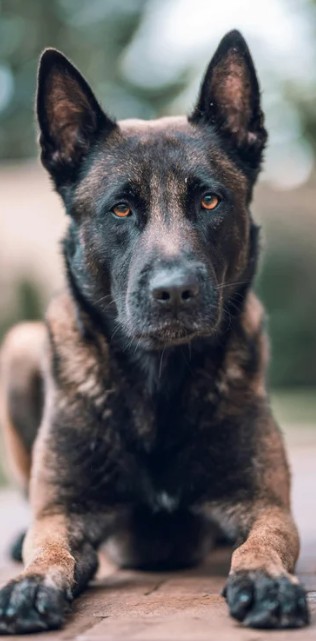
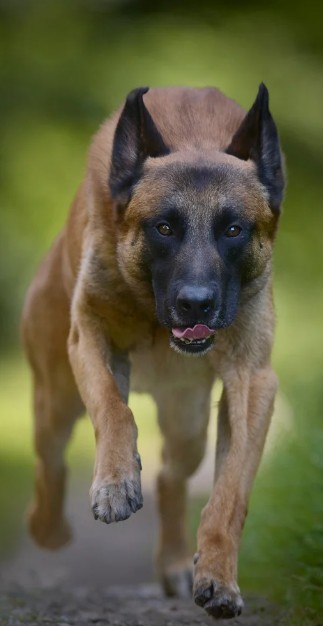
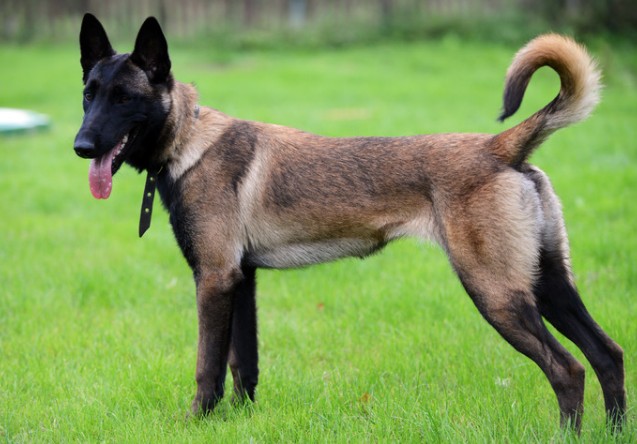
Get ready for a challenge that gives back tenfold.
The Belgian Malinois is loyal, intuitive, and built to bond deeply with its human. With the right structure and stimulation, it becomes a devoted, driven, and dazzling companion. Understanding this breed isn’t just about care—it’s about commitment.
Health Concerns and Management
Common health issues
Belgian Malinois are hardworking, but like any breed, they have genetic health risks. The most common problems include hip and elbow dysplasia. These joint issues can make running and jumping painful. Even with careful breeding, they remain a concern. Screening breeding dogs with tests such as Orthopedic Foundation for Animals (OFA) or PennHIP helps reduce risk in puppies.
Another area to watch is eye health. Malinois can develop progressive retinal atrophy (PRA) and cataracts, which can affect vision over time. Responsible breeders use genetic testing to identify carriers and help prevent these ophthalmic diseases.
Neurological problems also occur, although less often. These include epilepsy and certain sensitivities to loud noises, sometimes leading to seizures or stress-related behaviors.
Preventative care and health screening
Preventing these health issues starts with choosing breeders who screen their stock. Ask for proof of joint and eye clearances before getting a puppy. Early vet visits and maintaining regular health checks are essential.
Genetic testing is widely available and can spot many inherited diseases before symptoms appear. For joint health, weight control, proper exercise, and joint-support supplements, like glucosamine and omega-3 fatty acids, are commonly recommended.
Behavioral health considerations
Malinois are mentally sharp, but this can lead to behavioral health concerns. Without rest, enrichment, and decompression time, they may show burnout, aggression, or obsessive behaviors. It’s important to provide mental challenges and enough downtime every day, ensuring a balanced, healthy companion.
Looking at these health needs helps keep your Belgian Malinois thriving as an active, happy part of your life.
Living with a Belgian Malinois
Assessing Suitability for Owners
Choosing a Belgian Malinois is a big commitment. This breed is not the best fit for first-time or inexperienced dog owners. Their intelligence and high drive need an owner ready for daily training, structure, and stimulation. Malinois need leadership, predictability, and confidence from their people. If you prefer a low-maintenance companion or have a sedentary lifestyle, this breed may be overwhelming.
A Belgian Malinois thrives in active homes where exercise, play, and mental enrichment are part of the daily routine. For families who love the outdoors, enjoy running, or participate in dog sports, this breed can be a rewarding partner. However, we understand that such drive and energy may be too much for some, so carefully consider your lifestyle before committing.
Home Environment and Safety
Setting up a safe and structured home is key for a Belgian Malinois. Fencing should be secure and tall enough to prevent escapes, as this breed is agile and curious. Remove or lock away tempting and fragile objects, since these dogs are strong and can be destructive when bored. Baby gates can be helpful to set boundaries within the house.
Create daily routines and regular schedules for meals, exercise, and downtime. Safe crates or quiet zones give your dog somewhere to relax and decompress, preventing overstimulation.
Family and Other Pets
Integration into families with children and other pets is possible, but it requires planning and supervision. It is essential to socialize your Malinois early with children, teaching both the dog and kids respectful interaction. These dogs can be protective and wary of strangers, which makes supervision essential during introductions.
Other pets, especially smaller animals, need gradual and positive introductions. Always supervise play between Malinois and other dogs, as their herding and predatory instincts can lead to rough or intense play.
With the right home, a Belgian Malinois will give loyalty and energy in return. The journey of living with this breed continues to evolve as they grow alongside your family and routines.

Working and Sport Applications
Professional roles in action
The Belgian Malinois shines in demanding work. With quick reflexes and strong motivation, they are often chosen for military, police, and service roles. In the military, these dogs carry out vital tasks like explosive detection and patrol work. Their focus and stamina also make them trusted police partners for tracking, search and rescue (SAR), and canine apprehension. With a keen nose, Malinois excel at detection work—finding substances or missing people with speed and accuracy.
Sports built for their talents
For handlers not in professional fields, dog sports offer a safe outlet for the Malinois’ energy. They perform exceptionally in competitive events such as:
- Agility courses, which tap into their speed and flexibility
- Schutzhund, blending obedience, tracking, and protection
- Obedience and rally trials, calling on their trainability
- Scent work, which uses their incredible noses
Sports and working outlets not only satisfy a Malinois’s body but also stimulate their minds. Regular participation helps prevent boredom and channel intense drive in healthy ways.
Whole-dog wellbeing through work
Malinois thrive when they have a job to do. Purposeful work or sport can reduce behavioral issues by focusing their natural instincts. Physical tasks paired with mental challenges lead to a more balanced, satisfied dog. If you’re looking for a breed that enjoys working alongside you—be that in a search field, on an obstacle course, or in service—this is a dog that gives back what you invest.
This daily engagement makes a real difference for the Malinois, supporting both physical health and emotional balance.
Behavioral Problem Prevention
Recognizing Early Warning Signs
Belgian Malinois are smart, high-energy dogs with intense motivation. Their behavior can quickly change if their needs are not met. Early signs of behavioral deterioration include restlessness, excessive barking, pacing, and sudden withdrawal from interaction. Owners may notice unusual activities like shadow chasing or tail biting. These changes often show the dog is under stress or boredom and need immediate attention.
Preventing Aggression, Anxiety, and Obsessive Behaviors
Malinois have strong prey drives and predatory motor patterns, which means they naturally chase and bite. When unsupported or under-stimulated, these instincts can turn into aggression or compulsive behaviors, such as non-stop spinning or chasing lights. Keeping your Malinois mentally and physically engaged is key.
To prevent anxiety and obsessive habits:
- Provide daily enrichment with puzzles, scent games, and training sessions
- Offer consistent routines and calm decompression periods
- Use balanced training that combines obedience, impulse control, and freedom to express natural instincts in a safe way
- Practice early, positive socialization, especially in the first 14 weeks
Under-Stimulation and Its Effects
Under-challenged Belgian Malinois are at high risk for behavioral issues. Without enough activity, they may develop neurosis, become destructive, or even aggressive. Mental fatigue and lack of breaks can also lead to burnout. Meeting their need for at least 2 hours of exercise and ongoing stimulation reduces these risks and supports balanced behavior.
By observing your dog’s behavior and giving structure, you’ll create a safe, happy home that fits their unique needs.
Selecting and Adopting a Belgian Malinois
Responsible breeder selection and puppy evaluation
Choosing a Belgian Malinois starts with finding a reputable breeder who prioritizes health and temperament. Informative breeders will welcome questions and provide proof of genetic testing for conditions like hip and elbow dysplasia or eye diseases. Check for clean, stimulating environments and puppies exposed to daily life noises and handling. Young Malinois should be alert, curious, and show balanced energy. Shy or overly reactive puppies may suggest poor early socialization, which can lead to challenges later in life.
Rescue considerations and adult dog assessment
Adopting an adult Malinois can be rewarding, but it requires careful evaluation. Many Malinois enter rescue due to unmet exercise or mental needs, not because of innate faults. Rescue organizations that are professional and supportive will assess dogs for sociability, health, and adaptability. When meeting an adult Malinois, observe their response to new experiences and people. Discuss the dog’s history, daily routine, and any behavioral quirks. Proper matching with your experience and lifestyle is key so everyone thrives.
Preparing your home and lifestyle
Before bringing a Malinois home, ensure your environment is safe and enriched. Fenced yards and secure doors are a must, as this driven breed can be an escape artist! Prepare mentally for a commitment to at least 2 hours of daily exercise, structured play, and ongoing training. Stock up on stimulating toys, create routines for physical and mental activity, and designate rest areas. Lastly, make sure all family members are informed and supportive, as consistency and teamwork go a long way when integrating a Belgian Malinois into your life.
Taking these proactive steps will help ensure both you and your new companion are set up for success.
Conclusion: Is a Belgian Malinois Right for You?
Assessing the Commitment
Choosing a Belgian Malinois is a major decision. This breed is known for its high drive, intelligence, and constant need for both mental and physical stimulation. You’ll need to provide at least 2 hours of active exercise and daily enrichment—every day. Owners also have to manage early socialization, structured decompression, and prevent behavioral burnout with careful planning. If your daily life is busy or unpredictable, or if you’re new to handling active breeds, the Belgian Malinois might overwhelm you. We understand that wanting a loyal, energetic companion is appealing, but an under-stimulated Malinois can develop serious behavioral problems and suffer emotionally.
Alternative Breeds to Consider
If you love the look or spirit of the Malinois but aren’t ready for such a demanding commitment, consider breeds better suited for less experienced owners or calmer lifestyles. Here are some supportive alternatives:
- Labrador retriever – friendly, eager to please, lower drive, and still highly trainable
- German shepherd (from show lines) – more balanced temperament and manageability
- Border collie (pet lines) – smart and active, but less intense than working Malinois
These breeds often need exercise and training, but their needs are more flexible and forgiving.
Ongoing Education and Support
Proper support is crucial for owners. Join breed clubs, local working-dog groups, or online Malinois communities for advice and encouragement. Professional trainers, animal behaviorists, and veterinarians with working dog experience can help you find solutions to challenges. You’ll find that staying informed and connected is both Informative and supportive on your journey with this exceptional breed.

